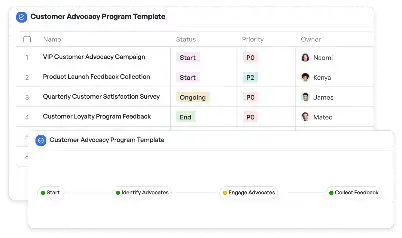Semiconductor Design Margin Analysis
Achieve project success with the Semiconductor Design Margin Analysis today!

What is Semiconductor Design Margin Analysis?
Semiconductor Design Margin Analysis is a critical process in the semiconductor industry that ensures the reliability and performance of electronic circuits under varying conditions. This analysis evaluates the tolerances and variations in design parameters, such as voltage, temperature, and manufacturing processes, to ensure that the final product meets the required specifications. By identifying potential issues early in the design phase, engineers can make necessary adjustments to avoid costly failures in production. For example, in high-speed processors, even a slight deviation in design margins can lead to significant performance degradation. This template provides a structured approach to analyze and optimize these margins, ensuring robust and efficient designs.
Try this template now
Who is this Semiconductor Design Margin Analysis Template for?
This template is designed for professionals in the semiconductor industry, including circuit designers, validation engineers, and project managers. It is particularly useful for teams working on complex projects such as ASICs, RF circuits, and memory chips, where design margins play a crucial role in ensuring performance and reliability. For instance, a validation engineer can use this template to systematically evaluate the impact of process variations on circuit performance, while a project manager can track the progress of margin analysis tasks across different teams. By catering to the needs of various roles, this template ensures a comprehensive approach to design margin analysis.

Try this template now
Why use this Semiconductor Design Margin Analysis?
The semiconductor industry faces unique challenges, such as shrinking device geometries, increasing power densities, and stringent performance requirements. These factors make design margin analysis more critical than ever. This template addresses specific pain points, such as the difficulty in identifying and quantifying design margins, by providing a clear framework for analysis. For example, it includes predefined workflows for tasks like circuit simulation and validation, which help engineers focus on critical aspects of margin analysis. Additionally, the template facilitates collaboration among team members by providing a centralized platform for tracking progress and sharing insights. By using this template, teams can ensure that their designs meet the highest standards of quality and reliability.

Try this template now
Get Started with the Semiconductor Design Margin Analysis
Follow these simple steps to get started with Meegle templates:
1. Click 'Get this Free Template Now' to sign up for Meegle.
2. After signing up, you will be redirected to the Semiconductor Design Margin Analysis. Click 'Use this Template' to create a version of this template in your workspace.
3. Customize the workflow and fields of the template to suit your specific needs.
4. Start using the template and experience the full potential of Meegle!
Try this template now
Free forever for teams up to 20!
The world’s #1 visualized project management tool
Powered by the next gen visual workflow engine




